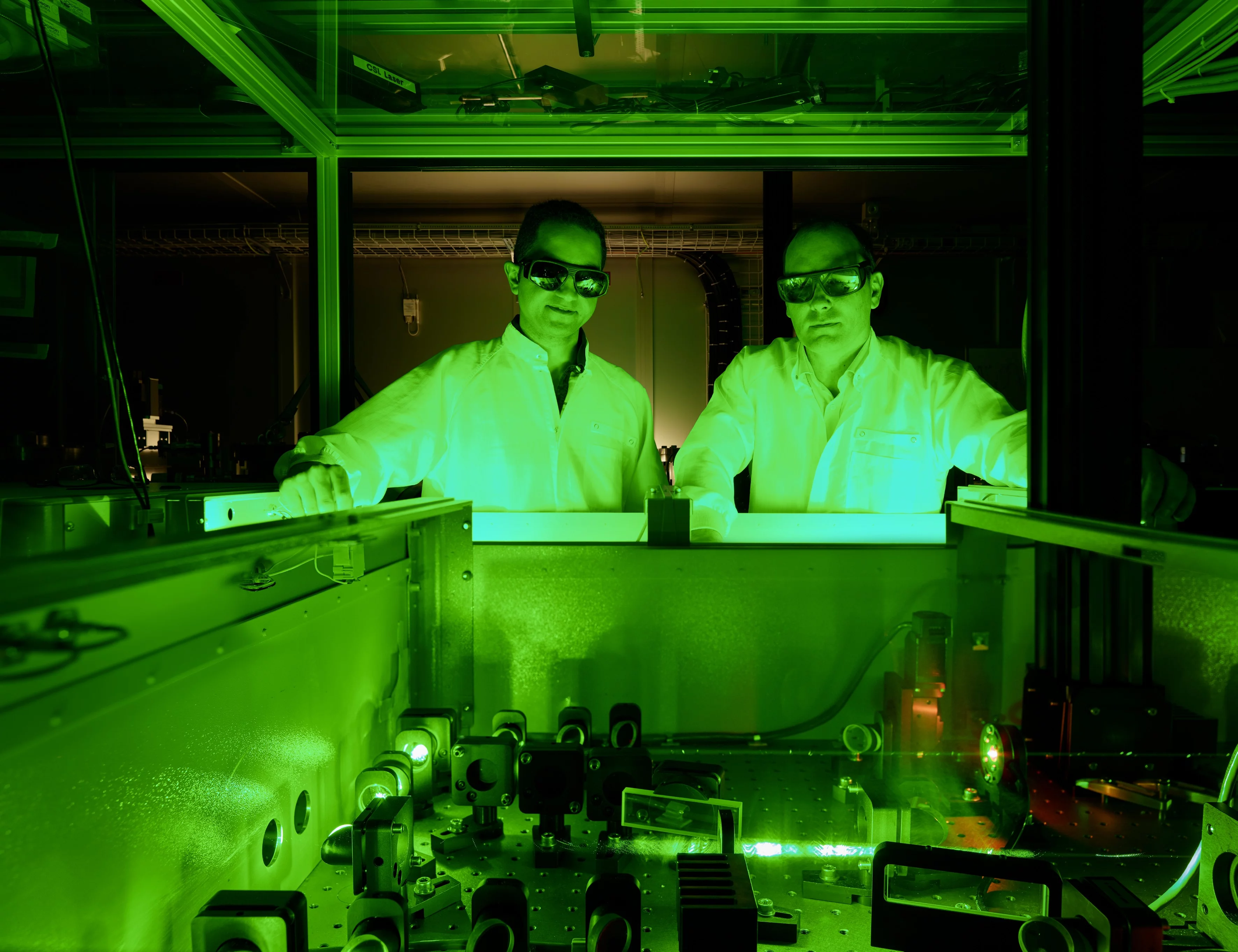There are limits to how short a flash of light can be – in both time and space. Researchers from the Paul Scherrer Institute (PSI) have now succeeded in reaching these physical limits and producing the smallest possible flash. To do so, they used terahertz light, which is physically related to visible light or radio waves, but differs in its wavelength. In the experiment, a special crystal was illuminated with laser light and thus stimulated to emit terahertz light, which a mirror system subsequently focused to generate a highly concentrated flash. The challenge was to actually produce the terahertz light at a high enough quality for it to be focused. Highly intensive terahertz light is becoming increasingly important as a research tool because it can be used to specifically alter the behaviour of materials and study their properties.
There are limits to how short a flash of light can be. This is because it needs to contain at least one crest
. A research team led by Christoph Hauri, who works at PSI and the EPFL, the Swiss Federal Institute of Technology Lausanne, has now developed a method that enables these fundamental physical limits to actually be achieved and flashes of light generated that take up the smallest possible volume and last for the shortest possible time. To do this, the scientists produced a flash of terahertz light and focused it as intensely as physics allows in all spatial directions and time.
In principle, terahertz light is related to x-rays, visible light, microwaves or radio waves – all of which are different forms of electromagnetic radiation, which differ in their wavelengths, i.e. the distance between two consecutive crests in a light wave. Terahertz light has a wavelength of around 0.1 to 1 millimetre, which is between 100 and 1,000 times larger than that of visible light. The length of the shortest possible flash also depends on the type of light used.
Terahertz light offers insights
Researchers are convinced that studies with intensive terahertz light will yield a wealth of fresh insights into the behaviour of novel materials. This new knowledge will contribute to the development of new sensors or innovative and extremely fast optical devices. The behaviour of electrons inside materials can be controlled with terahertz light so that the properties of the material change markedly for a brief moment. Certain materials can be converted from an insulator into a metal if illuminated with the right terahertz light, for instance. This means that mirrors can be realised that only exist for a blink of an eye and only reflect light in this short space of time. With the aid of terahertz light, researchers therefore hope to obtain results that might help develop new sensors or novel, extremely rapid optical devices – such as mirrors, which can quickly be switched from reflective to see-through, or optical modulators that can be used to swiftly alter the properties of light.
The possibility of concentrating terahertz light intensely is important for these experiments. In fact that is how the electric field and magnetic field pulse reach the values necessary to pull electrons to their normal state and then move quickly and in a controlled manner in the exposed material. Only a few years ago, it was virtually impossible to produce intensive terahertz light and the tools to focus the light intensively were also lacking. The new technique developed by the PSI researchers can now be used to generate terahertz light efficiently and focus it extremely intensively.
As a starting point, the researchers used a conventional laser system, where the light is converted into the desired terahertz light with the aid of a special crystal. In order to produce the uniquely concentrated terahertz flash, the researchers used a special mirror arrangement to focus the light on a small dot. For a beam to be concentrated with such precision, however, it needs to be high quality from the outset – the researchers say that it needs to have a flat wave front. This is already familiar from burning lenses – sunlight can easily be concentrated on a dot because the sunbeams are parallel to each other. In a room containing many lamps, however, it would not be possible to concentrate all the light on one, single point.
The perfect flash of light in several steps
The PSI researchers faced a similar problem: the terahertz beams occur at different points on the crystal and therefore spread in slightly different directions. There is currently no direct method to subsequently correct the different directions of propagation. But it is possible to specifically change the incoming laser beam, which stimulates the crystal. As the properties of the terahertz beam depend on both those of the laser beam and the crystal, however, the properties of the terahertz beam cannot simply be set by predetermining certain properties of the laser beam.
Nonetheless, the adjustment of the initial beam was the right course. The researchers altered the properties of the laser beam and the orientation of the crystal in several steps so that the terahertz beam gradually improved. As a result, they developed a reliable method that enables terahertz light to be concentrated for different crystals in the smallest space-time volume that the laws of physics allow.
Text: Paul Scherrer Institut/Paul Piwnicki
Additional information
Laser Group, SwissFEL-ProjectContact
Prof. Dr. Christoph Hauri, Head of Laser-Group, SwissFEL-Project, Paul Scherrer Institut and Ecole Polytechnique Fédérale de Lausanne EPFLTelephone: +41 56 310 4197, E-Mail: christoph.hauri@psi.ch
Dr. Mostafa Shalaby, Laser-Group, SwissFEL-Project, Paul Scherrer Institut
Telephone: +41 56 310 3623, E-Mail: mostafa.shalaby@psi.ch
Original Publication
Demonstration of a low-frequency three-dimensional terahertz bullet with extreme brightnessMostafa Shalaby and Christoph P. Hauri,
Nature Communications 6, 5976 (2015);
DOI: 10.1038/ncomms6976 Published: 16 January 2015

